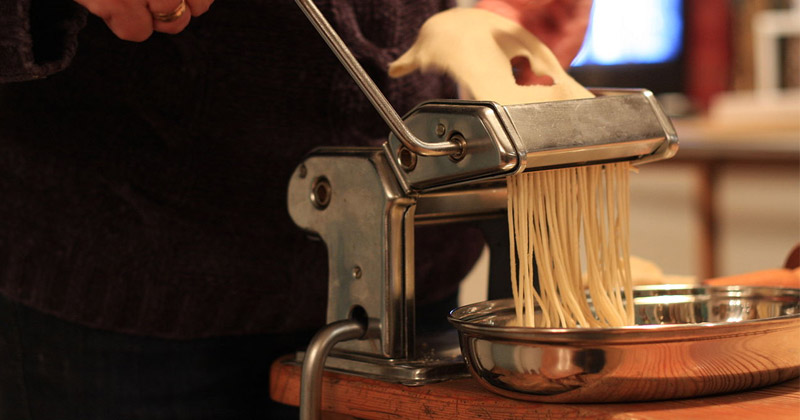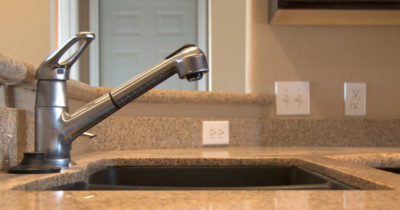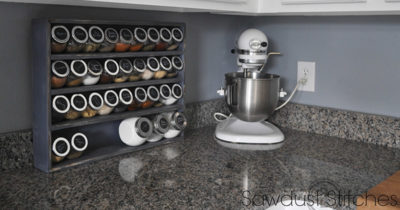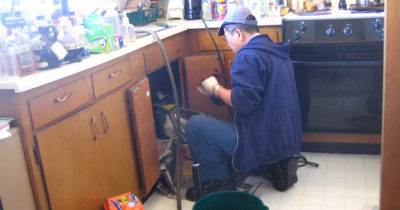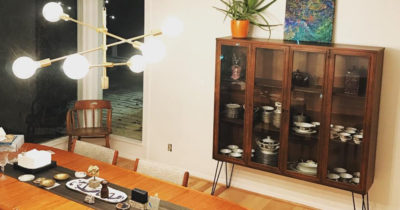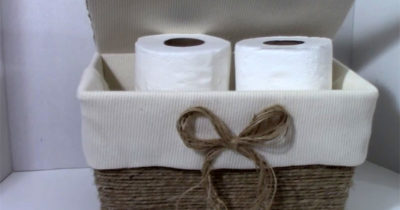What Is A Pasta Maker & How Does It Work?
Pasta makers, also called pasta machines, are small kitchen appliances that help you make homemade pasta by shaping dough into whatever shapes you want.
These machines are available in electric and hand-cranked versions. Both types of machines roll and extrude dough out into a predetermined shape whether that’s a flat sheet, tubular noodle, or a spaghetti noodle.
Let’s look deeper into pasta makers to learn more about the different kinds & ultimately how they work.
Different Types of Pasta Makers
There are two main styles of pasta makers:
- Manual(or hand-cranked)
- Electric
In general a manual version will be cheaper, mainly because it doesn’t need any of the extra components used in the electric models. However the electric models are easier to use.
There’s no denying that either type of pasta machine is an improvement over traditional hand-rolled methods.
They both take up less room, less time, and require less training.
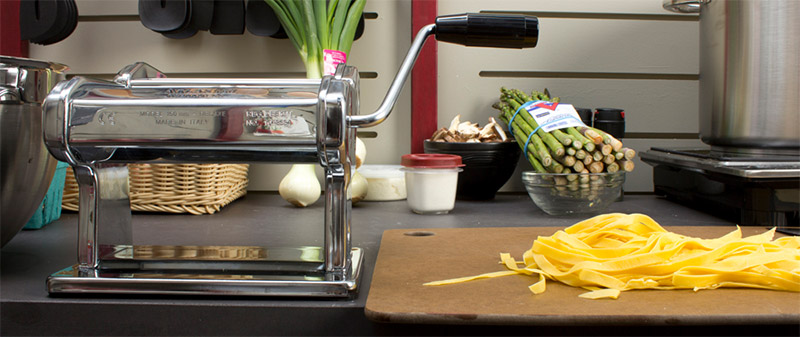
The hand-cranked pasta machine was the first version ever made available. This type of pasta machine is operated by a handle on one end that you rotate to feed through the dough. Because one hand is occupied with turning this crank, only one hand is left free to feed in the dough and catch it as it comes out.
Having one hand in two places isn’t possible so this means you’d either need to enlist the help of a friend or work out a setup where the pasta can be dispensed into a bowl.
This is usually doable with some ingenuity. But since the machine is turned manually it can go at an irregular pace, which can sometimes lead to slightly irregular pieces. No good!
Electric models, which include any models attached to mixers, are by far the easiest to operate.
Most electric pasta machines have multiple speed options so all you have to do is select the preferred speed and feed in the dough. On these models the user’s second hand is free to catch the pasta as it comes out, hold the unit steady, or guide the sheet of pasta steadily out of the machine.
Both great choices but with pros & cons to both sides(hint: electric is definitely pricier).
What Sort of Dough Works In Pasta Machines?
Pasta dough recipes are determined by the type of pasta machine.
For most pasta makers the dough is made either by hand or in a stand mixer, mixed and kneaded to the proper consistency before it is fed into the machine.
However the most expensive pasta makers often include a bowl with mixing tools built-in.
For these machines all you have to do is add in the ingredients for the dough, select the appropriate settings, and let the machine do all the work. Maybe kick back and put on a ball game.
These higher-end machines mix, knead, and roll then cut the pasta for you.
What Types Of Pasta Can You Make?
These machines are capable of making nearly any type of pasta you see in the store. Although for more complex shapes you may need to get extra extensions.
The simplest setting of any pasta maker is rolling the dough out into a flat sheet.
This can then be used to make lasagna noodles, or can be stuffed and folded into ravioli or tortellini. The user can adjust the thickness of the sheet as needed.
Depending on the type of noodle desired the pasta maker can roll the dough into a flat sheet and cut it for flat noodles like lasagna or fettuccine. Or it can push the dough through holes in a metal or plastic container for rounded or oddly shaped noodles like spaghetti, penne, or manicotti.
Be aware that some of the simplest pasta makers only let you push & slice or roll & cut, but not both. This can limit the types of pasta you can make right out the box. Thankfully there are tons of accessories & add-ons you can purchase to get the full experience.
What Are Pasta Maker Accessories?
Like many appliances, a pasta machine can be improved with the right accessories.
The first accessories to consider are those that help shape the dough into the pasta you want.
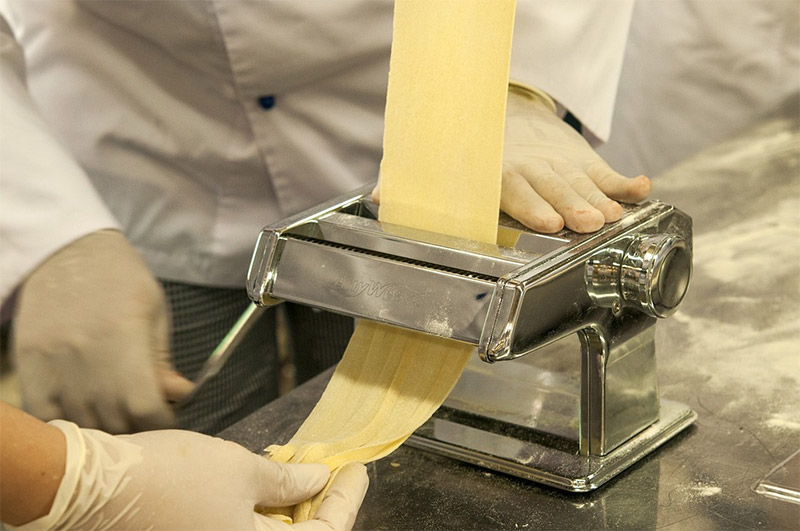
Look at which noodles any given machine can make, then see if attachments are available to make other noodle varieties. For example, an extruding machine might come with extrusion plates to make spaghetti and angel hair pasta. But you may need to buy another plate to make penne.
In the same vein some pasta requires additional shaping after the dough is made. If you’ll be making dumplings, ravioli, or tortellini, you might consider getting a dough presser or mold to help you make each piece a uniform size and shape.
Lastly an accessory that almost everyone with a pasta maker will need is a drying rack.
These racks look like a tiny post with spindles sticking out. Long noodles can be draped over the spindles to dry without sticking together.
Granted you can save money by making your own drying rack which can be just as effectual in the long run.
If you plan to serve spaghetti regularly you might also consider a spaghetti measuring tool that helps ensure you’re making the right amount of pasta for the whole family. And the in-laws. Maybe that long-lost cousin who only pops in on holidays…
Anything Else To Know?
Despite its name, a pasta maker can do much more than make just pasta.
Especially if you have the kind of dough that easily rolls into a flat sheet. If you do use simple flat dough then you can pick up a run-of-the-mill pasta machine for prepping dough into crackers, empanadas, pie crusts, and so much more.
Basically any recipe that requires a thin even-layer of dough can be aided with a pasta maker.
In addition to dough this machine can be used to roll out fondant for cake decorating. The pasta maker can roll out thin sheets for covering cakes, or thicker sheets for decorators to cut up. It’s a full utility kitchen appliance that’ll prove invaluable for anyone who likes baking or creating dough-licious foods from scratch.

